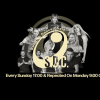-
 play_arrow
play_arrow
Clubalicious Clubalicious Radio
-
 play_arrow
play_arrow
London Calling Podcast Yana Bolder

Los Angeles, CA (December 20, 2024)—Harrison Audio’s new 32Classic is a modern take on a novel console design that helped bring Grammy success to a string of projects produced at the Village Recorder in the late 1970s.

In 1977, the Village Recorder installed Harrison Audio’s 32C mixing console, with its inline channel design and 32 multitrack buses, in two of the studio’s three rooms. Over the following three years, projects recorded at the Village—Steely Dan’s Aja album (1978) and “FM (No Static at All)” single (1979), and Supertramp’s Breakfast in America album (1980)—consecutively won the annual Grammy Awards for Best Engineered Recording – Non-Classical.
The 32C, introduced in 1975, was the manufacturer’s first console to offer company founder Dave Harrison’s inline design, featuring both an input and a monitor return path through each channel module, and was reportedly the world’s first desk with 32 multitrack buses. At the Village in 1977, a Harrison 3232C (with 32 inputs) replaced an MCI console in Studio A, Steely Dan’s favored room, while a 4032C (40 inputs) was installed in place of a Quad Eight in Studio B.
“I remember how easy the Harrison was to use and the inline monitoring capability,” says Lenise Bent, who was hired in August 1976 and was one of four women among the six assistant engineers at The Village. She assisted engineer Roger “The Immortal” Nichols for more than 10 months in Studio A during the tracking of Steely Dan’s Aja, followed by early sessions for the band’s next album, Gaucho (which also won the Grammy Award for engineering, in 1982), before joining engineer/producer Pete Henderson for Supertramp’s months-long Breakfast in America recording dates in Studio B.
“I liked the fact that there were four ways one could choose to record, either inline or all on faders, and you could switch the mic and monitor functions,” Bent continues. “Also, I liked creating the subgroups and stereo pairs, making one track the master—so easy to mix. This was all quite innovative back then. And I don’t recall anyone using any other preamps or EQs other than the ones on the console.”
Prajin Parlay Studioz Installs Harrison 32Classic
”The fact that the EQ was parametric, the board had VCA automation and it had 32 buses was so much nicer than the old boards,” adds Hernán Rojas, an engineer and assistant engineer at the Village around the same time as Bent. Rojas worked on the Harrison consoles on numerous projects, including remixes of some of the singles from Fleetwood Mac’s Rumours album, alongside engineers Ken Caillat and Richard Dashut, and a string of disco releases for Butterfly Records.
Launched nearly 50 years after the 32C, Harrison’s 32Classic supports traditional or modern hybrid workflows, combining the brand’s 32C four-band parametric EQ with variable high-pass and low-pass filters and 32 transformer-balanced Harrison mic preamps with 64 channels of built-in, high-end AD/DA conversion, 7.1.4 immersive monitoring and a Dante AoIP interface.
Written by: Admin
Similar posts
Recent Posts
- 🎶 New Music: JID, OneRepublic, Morgan Wallen, Post Malone, MarkCutz, Kidd Spin + More!
- Classic Tracks: The Fireballs’ “Sugar Shack”
- Classic Tracks: Arlo Guthrie’s “City of New Orleans”
- Classic Track: k.d. lang’s “Constant Craving”
- Classic Tracks: Waylon Jennings’ “Are You Sure Hank Done It This Way”
Recent Comments
No comments to show.Featured post

Latest posts

🎶 New Music: JID, OneRepublic, Morgan Wallen, Post Malone, MarkCutz, Kidd Spin + More!

Classic Tracks: The Fireballs’ “Sugar Shack”

Classic Tracks: Arlo Guthrie’s “City of New Orleans”

Classic Track: k.d. lang’s “Constant Craving”

Classic Tracks: Waylon Jennings’ “Are You Sure Hank Done It This Way”
Current show
Upcoming shows

Uplifting Only
Ori Uplift
09:00 - 11:00
Fresh Is Fresh
This Weeks Hottest Releases
11:00 - 16:00
Sugar Radio
Robin Schulz
16:00 - 17:00
Swedish Dance Chart
17:00 - 19:00

Global Sessions
By Tom Cuffia
19:00 - 20:00Chart
Powered by Dee jay promotions visit us








 Invalid license, for more info click here
Invalid license, for more info click here